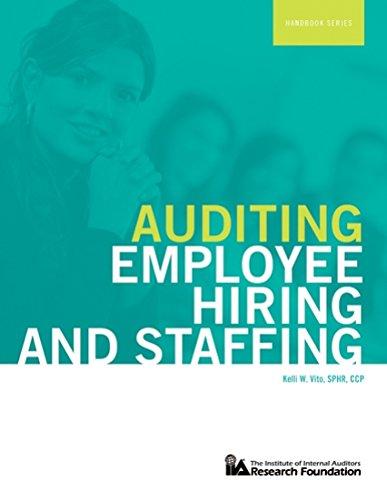Question
Background Business Case: The Hack, Pump, and Dump Scheme 1 Criminals have discovered yet another way to steal money. They are combining phishing attacks, Trojan
Background
Business Case: The Hack, Pump, and Dump Scheme1
Criminals have discovered yet another way to steal money. They are combining phishing attacks, Trojan horses, and keyloggers to steal identities for use in investment fraud. The scheme works like this. Hackers first gain the personal information of legitimate investors, including names, account numbers, passwords, and PINs. These criminals then hack into the accounts of unsuspecting investors, selling off their holdings in various companies to purchase shares in penny stocks. As they buy the penny stocks, the share price increases. (A penny stock is a low-priced, speculative stock of a small company.) After a short time, the hackers sell the penny stocks for a profit and transfer the money to offshore accounts.
Aleksey Karmardin, for example, used this scheme 14 times to defraud investors of more than $80,000. He and his accomplices allegedly hacked into four legitimate online trading accounts, sold their holdings, and purchased shares in a penny stock. The stocks price went from 26 cents to 80 cents in less than one day. The hackers promptly sold the shares and moved the profits to an offshore account.
The fraud affects not only investors but also companies whose stocks are pumped and then dumped. One firm (Firm X) had its stock price go from 88 cents to $1.28 in one day. The following day, the stock fell to 13 cents, where it remained. TD Ameritrade, an online broker, restricted online trade on the companys stock. The companys owner had planned to make a large acquisition, but given the declining stock price canceled the purchase.
1Source: Rainer, R. & Turban, E. (2009). Introduction to Information Systems: Supporting and Transforming Business (2nd edition). John Wiley & Sons: Hoboken, NJ
Question 1
When determining whether or not transactions are fraudulent, Ameritrade has asked that you keep their most recent policy in mind. Ameritrade has instituted a policy in which firms with prices within ~68% of the normal distribution of scores are ignored, outside ~68% (but within ~95%) of the normal distribution of scores are monitored, and outside ~95% of the normal distribution of scores are restricted. This policy is based on the most recent fraudulent activities that took place at Firm X.
Provide the cutoff values you would use to ignore, monitor, or restrict trade for Firm A based on the recent policy implemented by Ameritrade. Use the numeric values in the following graphic as a guide.
HINT: You will need to use the mean and standard deviation from the previous question and the 68-95-99 rule to create these cutoffs.
(a):
(b):
(c):
(d):
(e):
(f):
(g):
Question 2
Given your calculations in the previous question, state the decision you would make (i.e., ignore, monitor, or restrict trade) if the stock price for Firm A changed to each of the five values presented below.
i) $0.33
Group of answer choices
Ignore
Monitor
Restrict
Question 3
ii) $1.03
Group of answer choices
Ignore
Monitor
Restrict
Question 4
iii) $0.01
Group of answer choices
Ignore
Monitor
Restrict
Question 5
iv) $2.00
Group of answer choices
Ignore
Monitor
Restrict
Question 6
v) $2.15
Group of answer choices
Ignore
Monitor
Restrict
Question 7
Ameritrade decided to relax it's policy and only monitor trades within 90% of the normal distribution of scores. Use the zscore tables to provide the z-score that corresponds to the mid-90% of the distribution:
Use this z-score to provide the new cutoffs you would use to monitor trades.
Lower Limit: Upper Limit:
NOTE: Please round your answers to 2 decimal places.
Question 8
Calculate the z-score you would use to determine the probability that the stock price for Firm A will fall below a penny (i.e., $0.01).
Complete the blanks below with the values you used in this calculation.
| z = | - _______________________________ | = |
NOTE: Please round your final answer to 2 decimal places.
Question 9
Use this z-score and the z-score tables to determine and report the probability that the stock price for Firm A will fall below a penny (i.e., $0.01).
Question 10
You examine the price fluctuations for Firm B and find that the trades have a distribution with a mean of $1.11 and a standard deviation of 0.36. Calculate the z-score you would use to determine the probability that the stock price for Firm B will fall below a penny (i.e., $0.01).
Complete the blanks below with the values you used in this calculation.
| z = | - _______________________________ | = |
NOTE: Please round your final answer to 2 decimal places.
Question 11
Use this z-score and the z-score tables to determine and report the probability that the stock price for Firm B will fall below a penny (i.e., $0.01).
Question 12
True/False: It is less likely that the stock price for Firm A will fall below a penny than the stock price for Firm B.
Group of answer choices
True
False
Step by Step Solution
There are 3 Steps involved in it
Step: 1

Get Instant Access to Expert-Tailored Solutions
See step-by-step solutions with expert insights and AI powered tools for academic success
Step: 2

Step: 3

Ace Your Homework with AI
Get the answers you need in no time with our AI-driven, step-by-step assistance
Get Started


